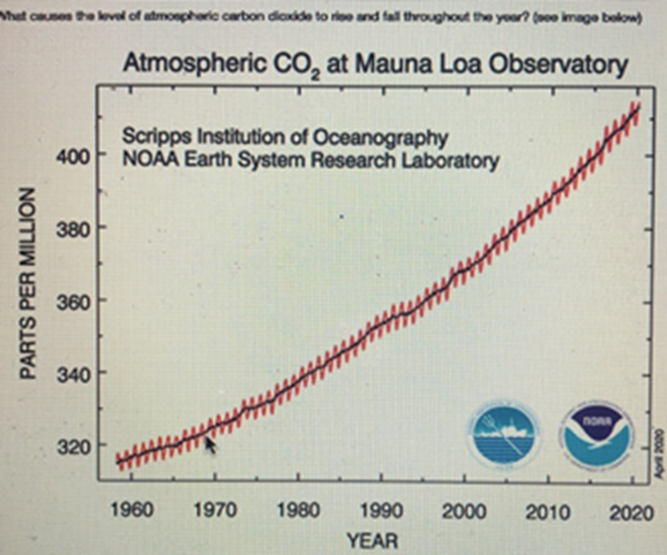|
Long-term plan unit:
11.3.2.1
|
School: Smirnovo gymnasium
school
|
|
|
Date:
|
Teacher name: Zhantlesova
Zhulduz
|
|
|
Grade:
11
|
Number
present:
|
absent:
|
|
|
Theme of the
lesson
|
Global warming: causes, consequences,
solutions
|
|
|
Learning objectives that
are achieved at this lesson(Subject Programme
reference)
|
To predict the effects of
possible global warming
|
|
|
Lesson objectives
|
-
Define the term global
warming
-
Describe how global warming
occurs
-
Analyse scientific data about
global warming and make predictions
|
|
|
Success criteria
|
Knows the causes of global
warming.
Knows how to make a forecast for 10
years.
Draws conclusions and answers
questions.
|
|
|
Language
objectives
|
-
Students will be able
to:
-
Explain the causes,
consequences and solutions of Global warming in oral and written
form.
-
Subject-specific vocabulary
and terminology: Greenhouse effect, global
climate change, global warming, pollution
-
A set of useful phrases for
dialogue/writing:
-
If atmospheric carbon dioxide
continues to rise the
____________will________too.
|
|
|
Values instilled in
the
lesson
|
Respect, work and creativity,
cooperation through the fulfillment of
tasks.
|
|
|
Cross-curricular
links
|
Geography
|
|
|
ICT
skills
|
Google map
app
|
|
|
Previous learning
|
Basic understanding on Ecology
and Global Warming
|
|
|
Course of the
lesson
|
|
|
Planned stages of the
lesson
|
Planned activities at the
lesson
|
|
Teacher
|
Students
|
Resources
|
|
|
Beginning
12
min
Middle
28
min
|
Show video: Global Warming 101
– to refresh the students to the concept of global
warming
States the lesson theme and
objective.
Present active
vocabulary.
Checks students’ prior
knowledge about the topic.
True-False
activity
-
Global warming is the decrease
of the average temperature on Earth.
-
Global warming is a problem
caused by the greenhouse gases.
-
The greenhouse gases are
nitrous oxide, water vapour, methane and carbon dioxide
(CO2).
-
The Sun’s radiation is trapped
by greenhouse gases in the atmosphere and leads to warming of the
Earth. This is process called Greenhouse
effect.
-
Burning fossil fuels produces
extra greenhouse gases, which means that more hot air will be
trapped.
-
An increase in temperature
won’t change many things on Earth.
Task 1. Read the text and
answer to the questions:
Encourage learners to read,
summarize and evaluate extracts about Global
warming.
After reading the text answer
to the following questions:
1) What are 2 main factors
that causes global warming do you know?
2) Give examples of the
reasons of each factors
|
Share their understanding
about the causes of global warming.
Students repeat after teacher
key words
Students do true false
activity
Students check
answers.
Students read the text and
answer to the questions.
Students discuss the answer
and peer assess each other’s key points
|
Video: Global Warming
101
Slides
1-2
Slides
3-4
Didactic material Attachment
1
Didactic material Attachment
2
|
|
|
|
3) Name 2 effects of global
warming.
Helps in classroom management
and provides extra support to the less abled
students.
2.Invite learners to analyze
scientific data including graphs on global
warming.
Task 2. Analyze the
graph
Analyze scientific data and
the graph showing atmospheric
CO2
and fill the
gaps.

1. In the year 1960, the
carbon dioxide concentration was
________(ppm).
2. In the year 2020, the
carbon dioxide concentration was________
(ppm).
3. According to the data
global carbon dioxide concentrations are ___________
significantly.
(increasing/decreasing)
4. If atmospheric carbon
dioxide continues to rise the
____________will________too.
|
Fish bone
activity
Ask students choose from the
text 1 cause, 1 effect and 1 solution to the Global warming and
fill in the Fish bone diagram.

|
|
Students analyze the graph and
fill the gaps.
Students discuss the answer
and peer assess each other’s answers.
In pairs,
students
choose from the text 1 cause,
1 effect and 1 solution to the Global warming and fill in the Fish
bone diagram.
|
Didactic material Attachment
3
Slides
5-6
Didactic material Attachment
4
|
|
End
5
min
|
In conclusion ask students to
answer to the following questions:
-
What are the main causes of
global warming?
-
What are the main consequences
of Global warming?
-
What will cause sea level to
rise?
Reflection:
Return to the
objectives of the lesson, discussing the level of their
achievement. At the end of the lesson, students reflect on their
learning:
Found out
…………..
Learnt
………………
Known
…………………
Remembered
…………..
|
Students give the
answers.
Students feel the reflection
in the stickers.
|
Slides
7-8
Sticky
notes
|
|
|
Differentiation – how do
you plan to give more support? How do you plan to challenge the
more able learners?
|
Assessment – how are you
planning to check students’ learning?
|
Health and safety
regulations
|
|
|
Give the advanced students
more challenging questions and scientific data and graphs to
analyse. Pair up less-abled to more advanced students. Provides
extra support to the less competent
studens.
|
Class participation during
discussions and presentations
Result of the
FA
|
No
risk
|
|
|
Reflection
Were the lesson
objectives/learning objectives realistic? Did all learners achieve
the LO?
If not,
why?
Did my planned differentiation
work well?
Did I stick to
timings?
What changes did I make from
my plan and why?
|
Use the space below to
reflect on your lesson. Answer the most relevant questions from the
box on the left about your lesson.
|
|
|
|




















